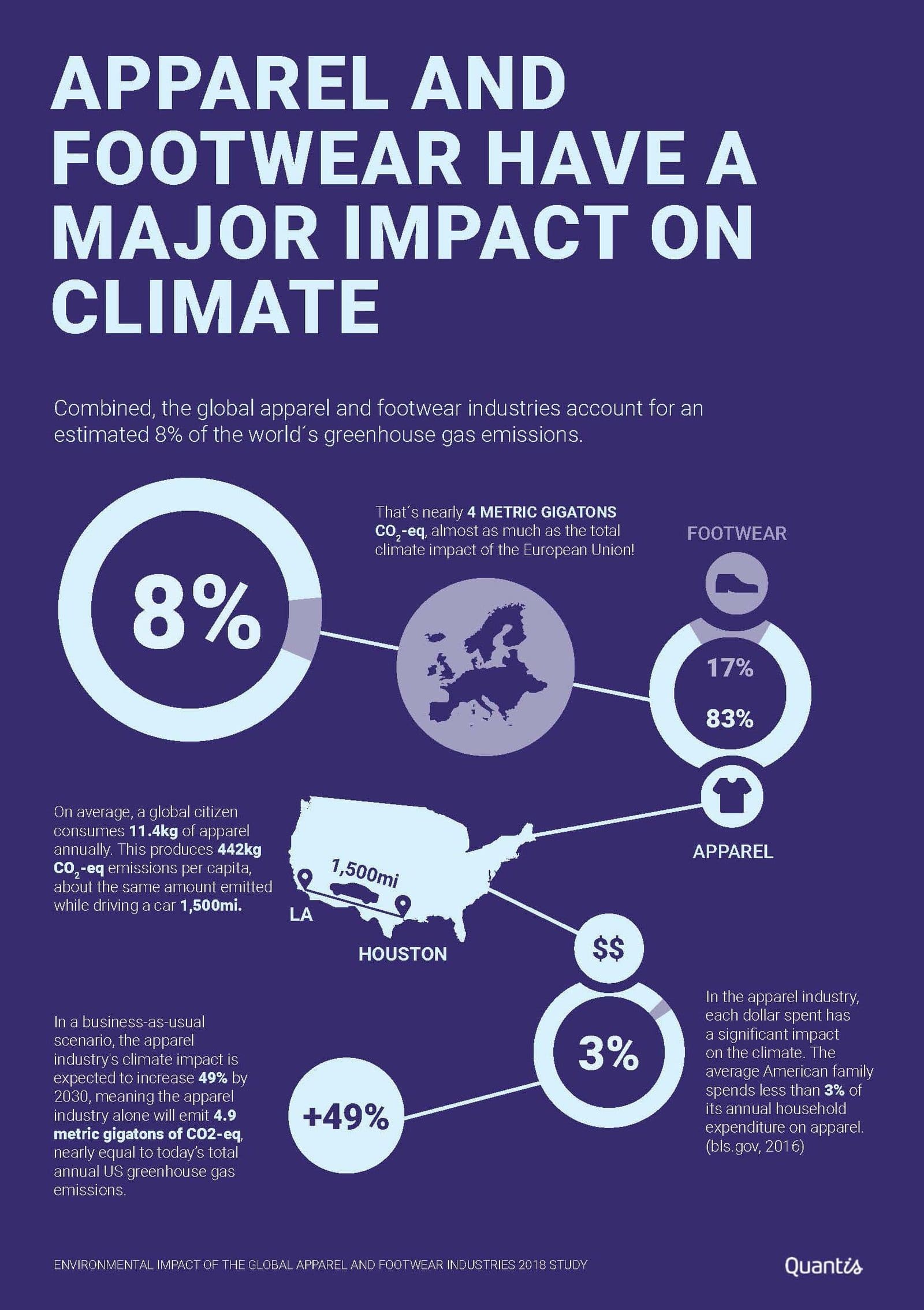A new report by Global Fashion Agenda and McKinsey & Company called Fashion on Climate (2020) addresses all stakeholders in the fashion value chain, including brands, retailers, manufacturers, citizens, investors, and policy makers to play their part in reducing emissions and align with targets set out in the Paris climate accord.
In 2018 the fashion industry produced 2.1 billion tonnes CO2eq, roughly 4 percent of global carbon emissions, a total share larger than that of France, Germany and the UK combined. Below is an excerpt of findings presented in the report: The fashion industry comprises a complex ecosystem of processes, products and services traditionally called a value chain and more recently defined by GFA as the fashion value cycle.
The cycle encompasses material production, fabric preparation, wet processes, retail-related activities, garment usage, and end-of-use activities such as recycling and circular business models.
The problem
If the fashion industry does not accelerate its response to climate change, it will by 2030 produce around twice the volume of emissions required to align with Paris Agreement global warming pathways.
From rising sea levels, to extreme rainfall and more powerful heatwaves, the consequences of climate change can no longer be ignored, either by society or the fashion industry, which will see many impacts on its operations in the years ahead.
According to the report, all players in the fashion value cycle have the potential to significantly reduce carbon emissions and help put the industry on the 1.5-degree pathway, whether that’s through coordinated decarbonisation efforts or sustainable consumption choices.
Who can act?
Brands and retailers have influence across the value cycle. Decisions conceived at the designers’ drawing table, policies established at HQ, partner choices, and end-of-use strategies are among the many factors that will dictate levels of emissions.
Factories, material producers and other upstream playersmust be fully involved in and committed to decarbonisation programmes. Brands and retailers should support value chain players in tracking, analysing and benchmarking their carbon emissions and enhancing transparency.
As citizens, we all need to work to extend the longevity of the clothes we wear. We can do that by washing less often and at cooler temperatures and ensuring that we recycle or enable reuse, rather than throwing things away.
Additionally, investors and regulators must help create an environment that promotes change and enables fashion players to accelerate their efforts.
Most actions to reduce carbon emissions will save money for the industry. However, sometimes upfront investment or changes in behaviour are required. In other circumstances, the absence of supportive regulation may block or slow implementation of change programmes.

